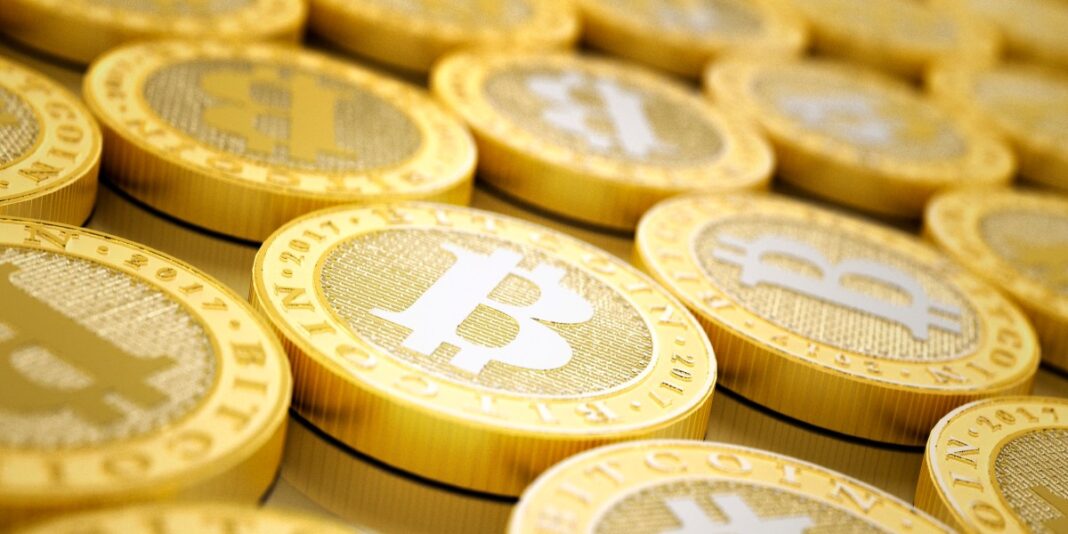Market Pulse
In an increasingly complex global economic landscape marked by persistent fiscal uncertainties in the United States, investors are rigorously re-evaluating traditional safe havens. Gold, for centuries, has stood as the quintessential store of value, but a compelling narrative is emerging: Bitcoin, the preeminent digital asset, is asserting its position as a modern alternative. Financial institutions, including asset management giant VanEck, are now forecasting an astonishing future for Bitcoin, projecting its potential to reach a staggering $644,000 as it vies for market capitalization parity with the yellow metal.
The Looming Shadow of Fiscal Uncertainty
The United States faces an ongoing challenge with its national debt and persistent budget deficits, a situation that continues to fuel concerns among economists and investors alike. This fiscal strain can lead to inflationary pressures and a debasement of fiat currencies, compelling a search for assets that can preserve purchasing power. Historically, gold has benefited from such environments, seen as an uncorrelated asset immune to the whims of government policy or central bank intervention. However, the digital era introduces a new contender, Bitcoin, which shares many of these anti-establishment attributes.
Bitcoin: A Digital Parallel to Gold
Bitcoin’s fundamental design imbues it with characteristics that closely mirror gold’s appeal as a safe haven. Its finite supply of 21 million coins, governed by a pre-programmed halving mechanism, creates inherent scarcity. Unlike fiat currencies, Bitcoin is decentralized, operating independently of any government or financial institution, offering a perceived hedge against political instability and inflation. This makes it an attractive proposition for those wary of traditional financial systems.
- Scarcity: Fixed supply of 21 million coins, mimicking gold’s finite nature.
- Decentralization: Operates outside governmental or central bank control, fostering independence.
- Global Accessibility: Transactable anywhere with internet access, providing borderless utility.
- Censorship Resistance: Transactions cannot be easily blocked or reversed by third parties.
- Inflation Hedge: Perceived ability to maintain value during periods of currency debasement.
VanEck’s Bold Projection: Bitcoin’s Market Cap Parity with Gold
Adding significant weight to Bitcoin’s safe-haven thesis, prominent asset manager VanEck has put forth an ambitious projection: Bitcoin could surge to $644,000, achieving half of gold’s market capitalization. This isn’t merely a speculative price prediction but a reflection of a deeper belief in Bitcoin’s evolving role within the global financial architecture. VanEck’s analysis underscores the growing institutional conviction that Bitcoin is not just a speculative asset but a legitimate long-term store of value with the potential to rival gold.
- Institutional Adoption: Increasing acceptance by large financial firms and wealth managers.
- Macroeconomic Drivers: Persistent inflation, debasement fears, and geopolitical instability pushing investors towards alternative assets.
- Technological Advancement: Continuous improvements in infrastructure and regulatory clarity making Bitcoin more accessible and secure.
- Generational Shift: Younger generations showing higher propensity to invest in digital assets.
Challenges and Volatility
Despite its growing appeal, Bitcoin is not without its challenges. Its inherent price volatility remains a significant concern for many traditional investors. Regulatory landscapes are still evolving, and while progress is being made, uncertainties persist across various jurisdictions. Furthermore, the digital nature of Bitcoin introduces cybersecurity risks, and while the network itself is robust, individual user security remains paramount. These factors mean that while Bitcoin’s long-term potential is clear, its path will likely be marked by periods of significant price swings.
Conclusion
As US fiscal uncertainty continues to influence global markets, the conversation around traditional and new safe havens intensifies. Bitcoin’s journey from a niche digital experiment to a serious contender against gold as a store of value highlights a profound shift in investor sentiment and financial paradigms. With institutions like VanEck confidently projecting a future where Bitcoin reaches half of gold’s market cap, the digital asset’s role in diversified portfolios and as a hedge against economic instability is becoming increasingly undeniable. While volatility and regulatory headwinds persist, Bitcoin’s unique attributes position it as a critical asset for the evolving financial landscape of the 21st century.
Pros (Bullish Points)
- Bitcoin's fixed supply offers a strong hedge against inflation and currency debasement.
- Increasing institutional adoption and regulatory clarity strengthen its appeal as a long-term store of value.
Cons (Bearish Points)
- High volatility remains a significant concern for some traditional investors.
- Regulatory uncertainties and potential geopolitical risks could impact its safe-haven status.
Frequently Asked Questions
Why is Bitcoin compared to gold as a safe haven?
Both assets are perceived as stores of value, especially during economic uncertainty, due to their scarcity and independence from traditional financial systems.
What is VanEck's projection for Bitcoin's price?
VanEck analysts project Bitcoin could reach $644,000 if its market capitalization reaches half of gold's.
What are the main drivers for Bitcoin's adoption as a safe haven?
Drivers include global macroeconomic instability, inflation concerns, the asset's decentralized and immutable nature, and increasing institutional interest.



